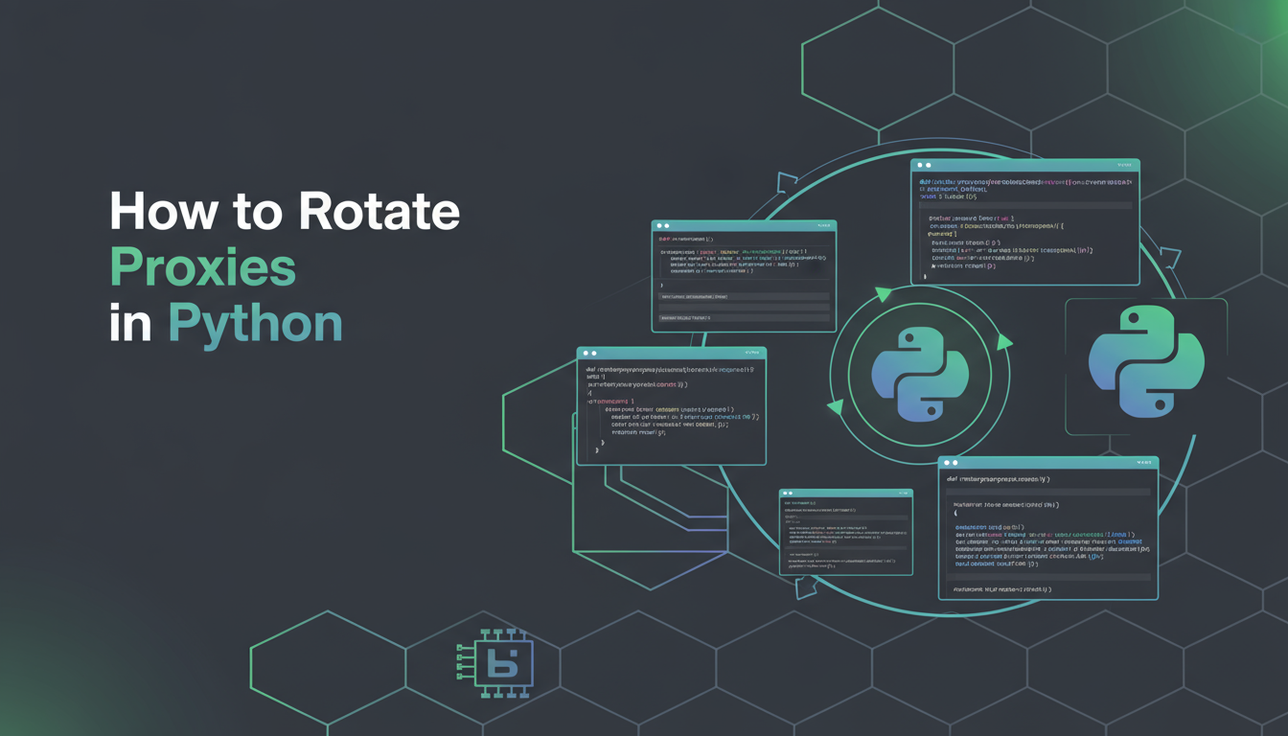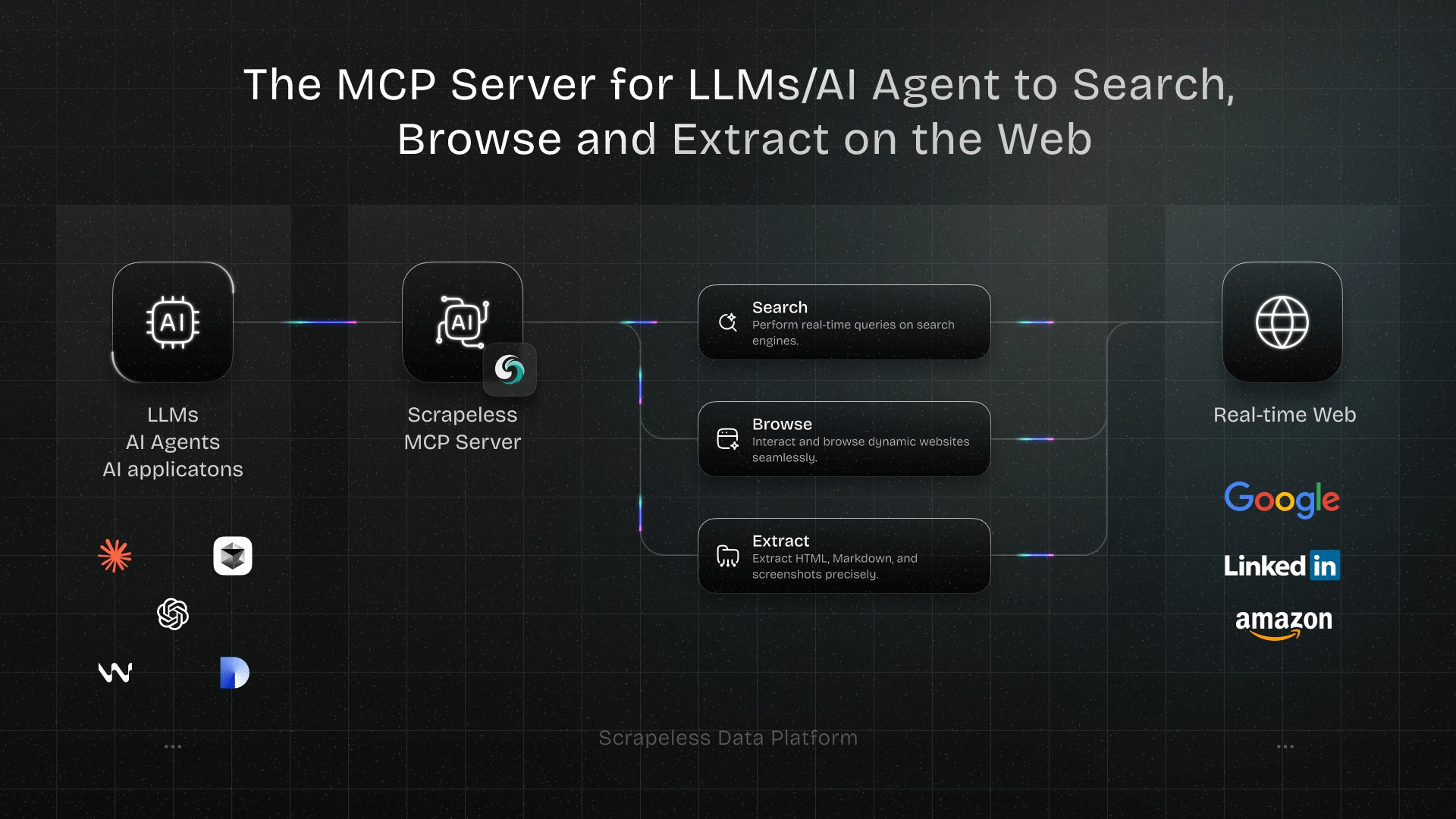How to Rotate Proxies in Python
Expert Network Defense Engineer
Introduction
Rotating proxies in Python ensures stable, reliable web scraping and automation. Using a single IP can lead to blocks and rate limits. This guide covers 10 practical methods to rotate proxies effectively. For a faster and simpler solution, consider using Scrapeless, which handles proxy rotation automatically.
1. Using a List of Proxies Manually
Conclusion: Manually switching proxies from a list helps avoid detection.
Steps:
- Prepare a list of proxies (
proxies = ["http://ip:port", ...]). - Use
random.choice(proxies)to select a proxy for each request. - Pass the proxy to
requestsorhttpx:
python
import requests, random
proxies = ["http://111.111.111.111:8080", "http://222.222.222.222:8080"]
proxy = random.choice(proxies)
response = requests.get("https://example.com", proxies={"http": proxy, "https": proxy})
print(response.text)Application: Small-scale scraping or testing multiple endpoints without bans.
2. Using Proxy Rotation with Requests Session
Conclusion: A session object allows consistent proxy usage across multiple requests.
Steps:
- Create a
requests.Session(). - Assign a proxy from your list for each session.
python
import requests, random
session = requests.Session()
proxies = ["http://111.111.111.111:8080", "http://222.222.222.222:8080"]
session.proxies.update({"http": random.choice(proxies), "https": random.choice(proxies)})
response = session.get("https://example.com")
print(response.status_code)Application: When scraping pages that require persistent sessions.
3. Using Third-Party Proxy Libraries
Conclusion: Libraries like requests-ip-rotator simplify proxy rotation.
Steps:
python
# Example with requests-ip-rotator
from requests_ip_rotator import ApiGatewaySession
session = ApiGatewaySession("https://example.com")
response = session.get("https://example.com")
print(response.text)Application: Best for APIs or frequent requests requiring IP rotation.
4. Rotating Proxies Using Tor
Conclusion: Tor provides free proxy rotation via circuits.
Steps:
- Install Tor (
sudo apt install tor) andstemPython library. - Connect through Tor SOCKS proxy (
127.0.0.1:9050). - Change IP with Tor commands.
python
import requests
proxies = {"http": "socks5h://127.0.0.1:9050", "https": "socks5h://127.0.0.1:9050"}
response = requests.get("https://example.com", proxies=proxies)
print(response.text)Application: Scraping anonymous data without paying for proxies.
5. Using Rotating Proxy Providers
Conclusion: Paid providers ensure high reliability and speed.
Steps:
- Subscribe to a service like Luminati, ScraperAPI, or Scrapeless.
- Use their endpoints with authentication.
- Automatically rotate proxies for each request.
python
import requests
api_key = "YOUR_API_KEY"
url = f"http://proxyprovider.com?api_key={api_key}&url=https://example.com"
response = requests.get(url)
print(response.text)Application: Large-scale scraping projects with minimal downtime.
6. Proxy Rotation in Selenium
Conclusion: Web automation requires rotating proxies to prevent IP bans.
Steps:
python
from selenium import webdriver
from selenium.webdriver.chrome.options import Options
import random
proxies = ["111.111.111.111:8080", "222.222.222.222:8080"]
chrome_options = Options()
chrome_options.add_argument(f'--proxy-server={random.choice(proxies)}')
driver = webdriver.Chrome(options=chrome_options)
driver.get("https://example.com")Application: Automated browsing and testing with multiple IPs.
7. Rotating Proxies in Scrapy
Conclusion: Scrapy supports middleware for proxy rotation.
Steps:
- Enable
HttpProxyMiddleware. - Define a list of proxies in
settings.py. - Use middleware to rotate per request.
python
DOWNLOADER_MIDDLEWARES = {
'scrapy.downloadermiddlewares.httpproxy.HttpProxyMiddleware': 1,
}
PROXY_LIST = ['http://111.111.111.111:8080', 'http://222.222.222.222:8080']Application: Large-scale scraping with Scrapy spiders.
8. Using Async Proxy Rotation with httpx
Conclusion: Async libraries enable concurrent requests with multiple proxies.
python
import httpx, asyncio, random
proxies = ["http://111.111.111.111:8080", "http://222.222.222.222:8080"]
async def fetch(url):
proxy = random.choice(proxies)
async with httpx.AsyncClient(proxies={"http": proxy, "https": proxy}) as client:
response = await client.get(url)
print(response.status_code)
asyncio.run(fetch("https://example.com"))Application: High-speed scraping for multiple URLs.
9. Auto Proxy Rotation with Scrapeless
Conclusion: Scrapeless handles proxy rotation automatically, simplifying development.
Benefits:
- No manual proxy list management
- Integrated with Python scraping scripts
- Supports high concurrency and reliability
Application: Ideal for both beginners and professionals seeking efficiency.
10. Rotating Proxies with Environment Variables
Conclusion: Dynamically change proxy configuration using environment variables.
Steps:
- Store proxies in
.envfile. - Load and randomly select proxies in scripts.
python
import os, random
from dotenv import load_dotenv
import requests
load_dotenv()
proxies = os.getenv("PROXIES").split(",")
proxy = random.choice(proxies)
response = requests.get("https://example.com", proxies={"http": proxy, "https": proxy})Application: Useful for configurable scraping pipelines.
Comparison Summary
| Method | Ease of Use | Cost | Scalability | Best Use Case |
|---|---|---|---|---|
| Manual List | Easy | Free | Low | Small projects |
| Requests Session | Easy | Free | Medium | Persistent sessions |
| Proxy Libraries | Medium | Free/Paid | Medium | API calls |
| Tor | Medium | Free | Low | Anonymous scraping |
| Paid Providers | Easy | Paid | High | Large-scale scraping |
| Selenium | Medium | Free/Paid | Medium | Automation tasks |
| Scrapy | Medium | Free | High | Large spider projects |
| Async httpx | Hard | Free | High | High concurrency |
| Scrapeless | Very Easy | Paid | High | All-in-one solution |
| Env Variables | Medium | Free | Medium | Configurable pipelines |
Key Takeaways
- Rotating proxies is essential to prevent blocks and maintain scraping stability.
- Python supports many methods, from manual lists to async and paid solutions.
- Scrapeless offers the easiest and most reliable rotation method.
FAQ
Q1: Why should I rotate proxies in Python?
To avoid IP bans, rate limits, and ensure reliable scraping.
Q2: Can I use free proxies for rotation?
Yes, but reliability and speed may be low. Paid services are recommended for large projects.
Q3: Does Scrapeless require coding?
Minimal coding is required; it integrates seamlessly with Python scripts.
Q4: Can I rotate proxies in Selenium?
Yes, by configuring the browser options with different proxy servers.
Q5: How often should I rotate proxies?
It depends on your request volume and target website policies.
Recommended Solution
For a hassle-free experience, try Scrapeless to automatically handle proxy rotation and focus on data collection instead of manual management.
References
At Scrapeless, we only access publicly available data while strictly complying with applicable laws, regulations, and website privacy policies. The content in this blog is for demonstration purposes only and does not involve any illegal or infringing activities. We make no guarantees and disclaim all liability for the use of information from this blog or third-party links. Before engaging in any scraping activities, consult your legal advisor and review the target website's terms of service or obtain the necessary permissions.



